If you are looking for an off-beat place to spend some time away from the din of Mussoorie town, then this idyllic village is tailor-made for you.

Located in the outskirts of Mussoorie, Landour is a sleepy little hamlet.
It’s hard to believe the sheer contrast of the nature of both these locations, situated just about 5 km away from each other.
In fact, the hamlet started out as a British cantonment and is named after Llanddowror, a village in south west Wales.
While Mussoorie is the nerve point with the hustle bustle of tourist activities, Landour is reminiscent of a 19th Century British suburb.
For the serving Britons in the East India Company, it was a regular feature to name the towns in their adopted colonial homes after the cities and villages of UK, to get a feel of ‘home away from home’.
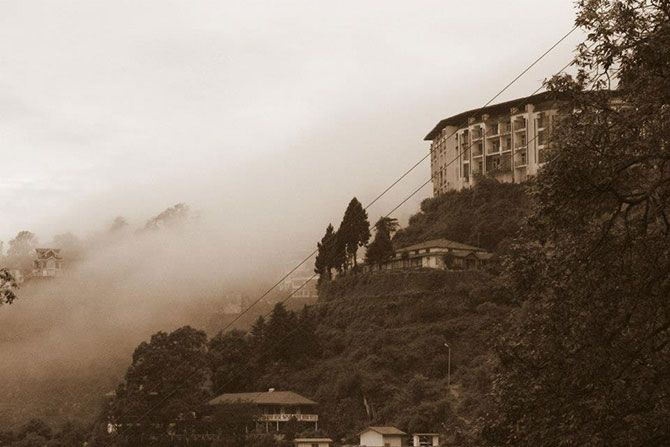
If you are looking for an off-beat place to spend some time away from the din of Mussoorie town, then this idyllic village is tailor-made for you.
The absence of commercial shops keeps 90 percent of the tourists away. In fact, there are hardly any hotels too.
Some rudimentary guest houses are located in the Sisters’ Bazar area.
Hence, if you are travelling with your family, it is advisable that you put up at Mussoorie and plan Landour as a day excursion.
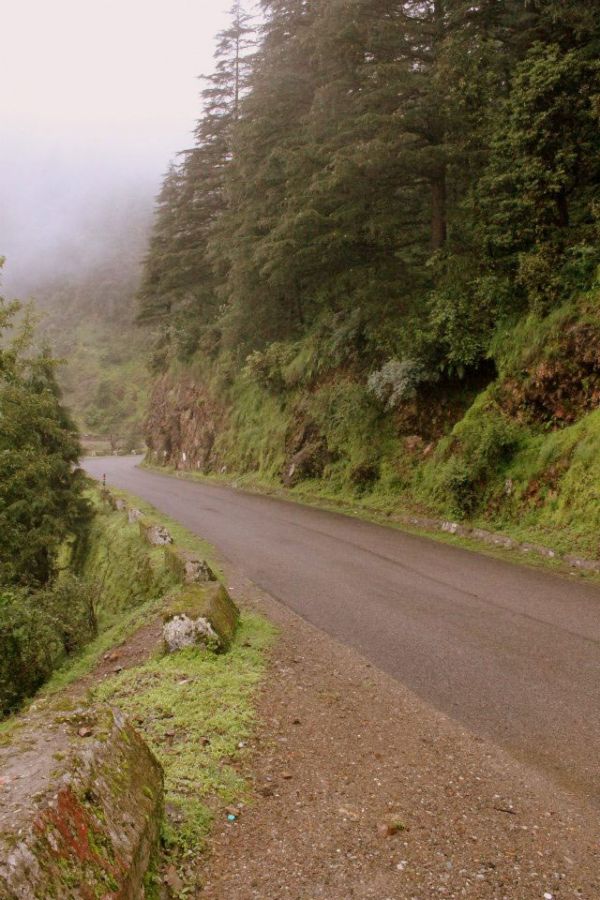
The best way to explore Landour is on foot or on a cycle.
The small landmarks of this unique village which you may consider visiting are the Clock Tower at Landour Bazar, the beautiful 17th Century Woodstock School, the Castle Hill Estate which now houses the Survey of India office, Kellogg’s Church, St. Paul’s Church at Char Dukaan (literally translated to 'Four Shops' is actually a cluster of small shops selling tea and snacks) and the Sister’s Bazar.
The Sisters’ Bazar derives its name from the nurses, who served at the sanatorium for the ailing British soldiers. Now it is the haven for homemade jam and cheese, which is a novelty of this sleepy hamlet.
The Lal Tibba is the highest point of Mussoorie-Landour with the AIR tower standing proudly on it.
Another notable hill which you may consider hiking is Pari Tibba, also known as the Burnt Hill, as it has been struck repeatedly by lightening. This is located south of the Woodstock School. (We were unable to visit it due to the uncanny superstition of one of our local villager friends, who had decided to accompany us).
The greatest influence on Landour has been the Cantonment Act of 1924, which has successfully banned logging in the area and has put a stop to rampant construction of buildings. The positive impact of the same can be felt as you hike through the cool, misty, conifer-lined roads.
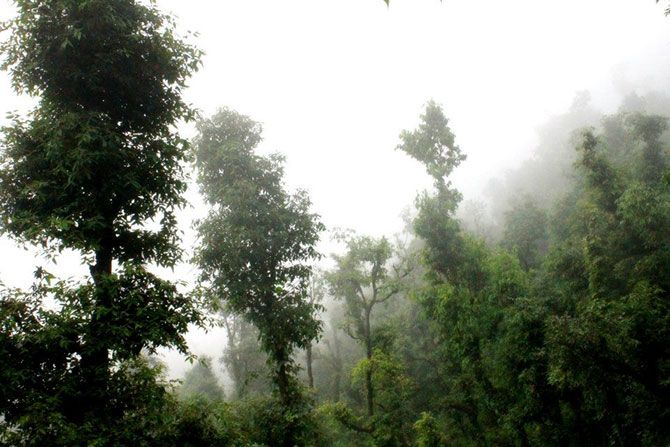
The air is unpolluted and the somnolent atmosphere is enhanced by the musty smell coming from the accumulated moss on the trunks of the pine, chir, ash, deodar and fir trees, which loom sombrely above.
Even though any destination is preferable on a clear day, especially if it has the option of viewing distant peaks, from personal experience I can vouch that hills have a special charm even on grey days. All you have to do is gear up in proper woolens with a raincoat, waterproof shoes (or even a pair of good sneakers) and the quintessential flask of hot coffee, and you are good to go.
The rainy season over here stretches from June to September. October heralds the chilly winter. Summer months are March onwards, when the temperature can even touch 30oC in the month of May. Lying at about 1000 ft above Mussoorie makes Landour chillier by 2-3oC.
Our stint of travel in August brought clouds and a drizzle with it.
However, as we walked through the winding, narrow roads lined on either side by deodar and pine trees,it was a beautiful sight to see the heavy, grey clouds looming over the valley at eye level or even lower.
Sometimes a wisp even passed us by, giving a moist feel on the exposed cheek. The walk through the roads with the crickets’ song and the wet smell of the herbs kept us in constant anticipation of seeing some creature suddenly appear from behind the curtain of the green foliage.
However, out of the entire gamut of the fauna encompassing the deer, jackal, jungle cat, sloth bear, flying squirrel, etc. it was only the langur and the macaque that chose to make cheeky appearances.
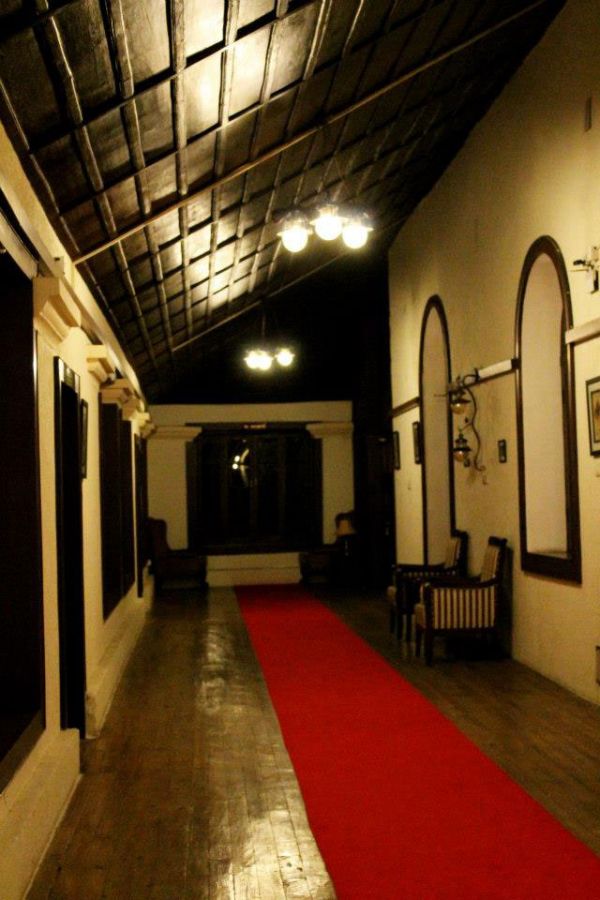
As the day came to a close, we headed back to our hotel at Mussoorie.
We had put up at the 180-year-old heritage hotel called the Ilbert Manor. The hotel boasts of elegant wooden interiors, red-carpet spiral staircases, a library and a smoke room.
The number of rooms in the hotel is few, but each room is comfortable and elegantly upholstered. The rooms have a balcony and a wide stretch of glass wall to help admire the view without letting the nippy air creep in.
Being a tourist hotspot of Uttarakhand, and a favourite weekend getaway for residents of NCR, Mussoorie has a wide array of hotels ranging from the likes of Marriott Walnut Grove and Fortune Savoy to several budget hotels.
Hence, once you land up at this destination finding an accommodation is generally not a problem. However, because of the tremendous rush, tourists generally prefer to book beforehand to avail of the type of lodging that perfectly fits their demand.
On the way back from Landour, it is best to visit the Mussoorie Mall. The mall is a melting pot of goods on offer, and tourists.
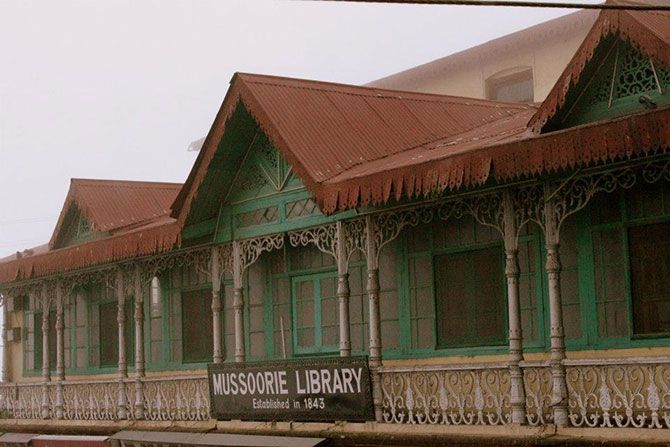
The library area has several restaurants and coffee shops. Some of them even provide live music to pep up the atmosphere.
On a clear night however, during your stroll on the Mall Road, one of the views not to be missed is the lit-up valley of Dehradun. It is a lovely sight to see the flickering lights in the backdrop of the pitch dark mountains resembling a thousand fireflies waiting to take off from a velvety black patch.
Our following day’s destination (about 30 km away from Mussoorie) was Dhanaulti. Braving the drizzle, our young driver took us to the destination, driving cautiously and taking double the time.
By the time we reached the main attraction, the Eco Park, it had started to pour. We waited patiently at a roadside stall with a steaming plate of noodles for the rain to abate, after a while it finally did. The best thing about heavy rains in the mountains, I believe, is its short spell.
Sitting on a grey chair, in front of a grey table, looking out at the grey raindrops falling on the grey road, I was reminded of a very popular O Henry short story. The experience was dreamy.
But taking into account the fact that travellers generally encounter a sunny weather at Dhanaulti, a walk at this protected forest patch is an enjoyable experience.
Set up by the Forest Department mainly to conserve greenery as well as to provide employment to the youth, who are delegated with multifarious responsibilities, ranging from ticket collection to guiding people, the park is a perfect place to spend the entire day.
There are options to walk around and seating arrangements are provided at strategic viewpoints.
You may also indulge in adventure sports like 'walking over the flying fox' or horse riding.
The best part about Dhanaulti is that it provides a few good overnight lodging options, so that tourists can savour the beauty of this scenic destination, cradled amidst the alpine forest region, at leisure.
Notable accommodation options are the Apple Orchard, Camp Awara and Drive Inn Hotel. From Dhanaulti you can also visit the Surkanda Devi Temple (further 8 km) and a government potato farm, which interestingly also doubles as a sunset view point.
Apart from these two lesser trodden destinations of course, there is the Queen of the Garhwal hills: Mussoorie.
Besides the Mall Road,the other places of interest in this town are:
Gun Hill Point: It has the additional thrill of being reached by a cable car which leaves from the Mall Road.
The Company Garden: It is a recreational spot amidst an array of floral blooms. The small wooden bridges and the miniature waterfalls make for a perfect setting to have a photo-shoot.
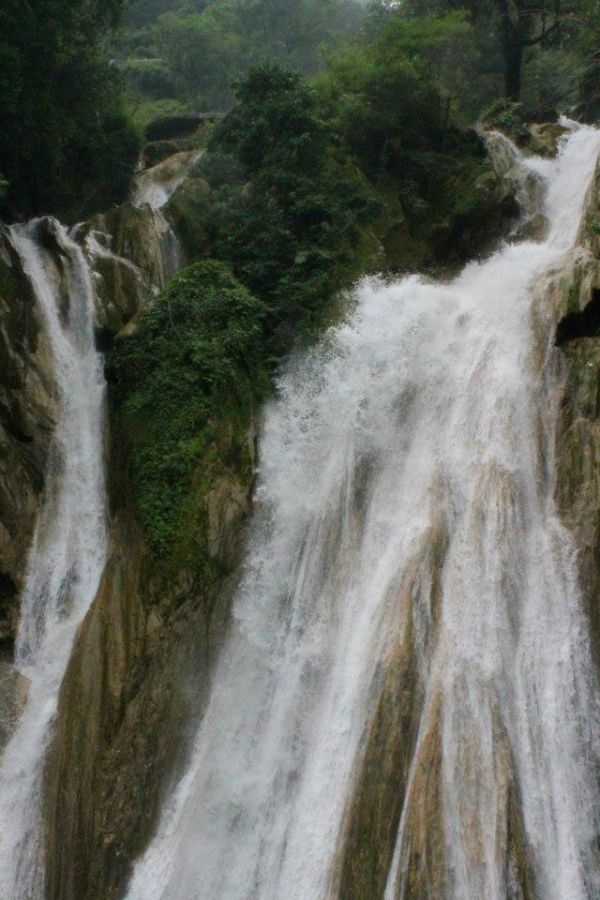
Kempty Falls: Though located at a considerable distance (14 km) in comparison to Bhatta or Jharipani Falls, the biggest tourist attraction is Kempty Falls. Years before, this used to be a natural waterfall with a picturesque vertical drop. Now however, this has been converted to a three-tier entertainment-cum-picnic spot with facilities for bathing and provision of food.
Ideal time to visit:
Visit these destinations from March to September, avoiding the chilly winter and the wet Himalayan monsoon. This is also the ideal time to view the peaks and ranges in bright sunshine.
How to reach:
Air:The closest airport is Jolly Grant Airport at Dehradun. Taxis are available on hire. (Dhanaulti: 60 km, Mussoorie: 34 km, Landour: 37 km)
Rail:The closest railway station is Dehradun. Taxis may be availed to reach any of your preferred destinations.
Road: Mussoorie is well-connected with a network of bus services, operated both by the state government as well as private operators.










